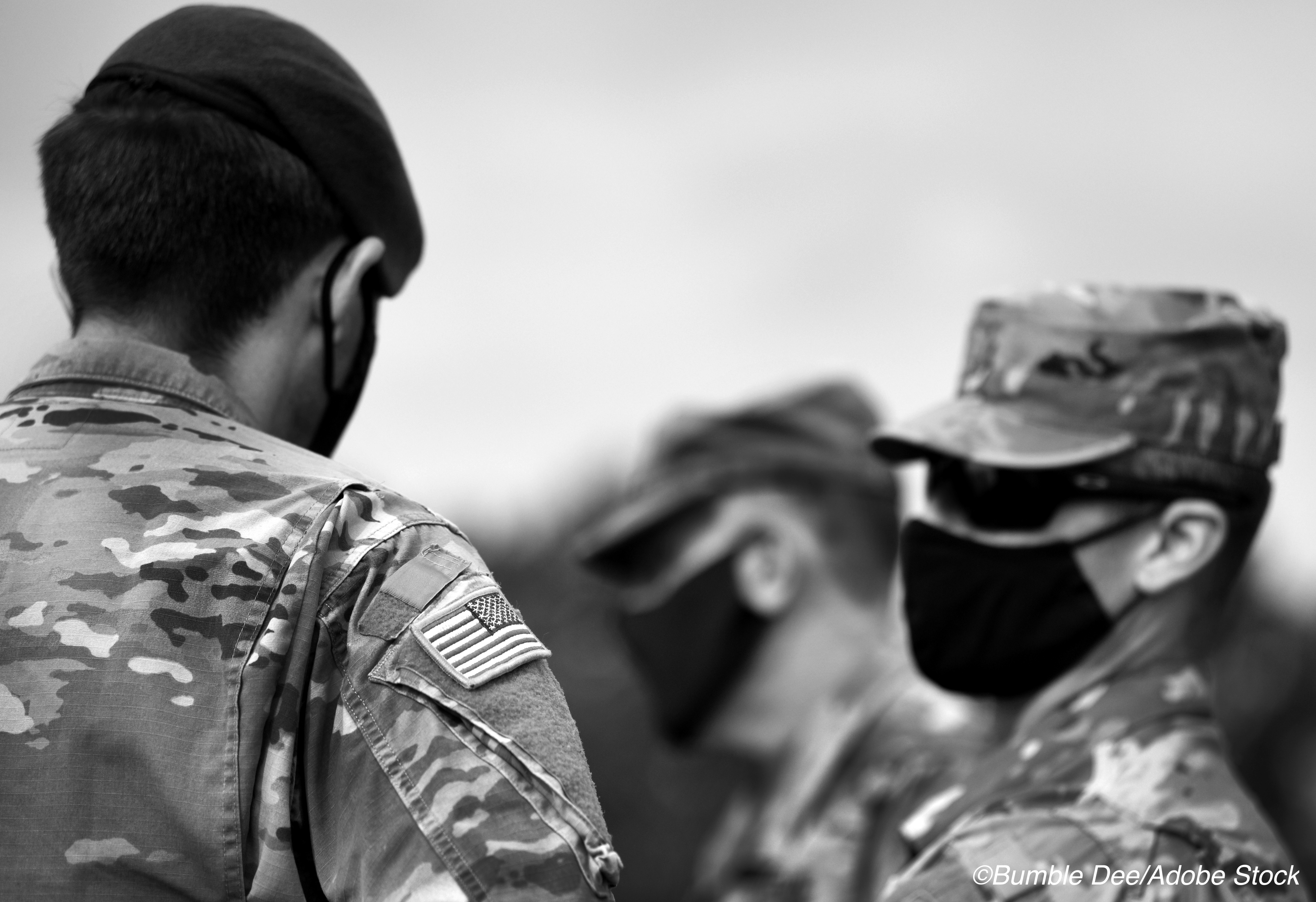Intensive, non-pharmaceutical infection control measures taken to reduce the transmission of Covid-19 at a U.S. Air Force recruit trainee camp resulted in lower infection rates than expected in such a congregant environment, according to a study published in JAMA Network Open.
Researchers also found that trainees with more symptoms and lower cycle threshold values upon reverse transcription-polymerase chain reaction assay carried a greater risk of transmitting Covid-19 infection.
“Despite [Covid-19’s] rapid worldwide emergence, there have been reports of effective implementation of nonpharmaceutical interventions, such as physical distancing and rapid isolation of symptomatic patients, that have prevented transmission in both institutions and the general population,” wrote study authors led by Joseph E. Marcus, MD, of Brooke Army Medical Center, Infectious Disease Service, JBSA Fort Sam, Houston.
Marcus and colleagues conducted this study to better assess whether symptoms and lab results on the first day of a Covid-19 diagnosis are associated with the development of a case cluster in a congregant setting. To do this, they included 10,613 Air Force trainees with Covid-19 from the Joint Base San Antonio-Lackland, the main site of entry for individuals when they enlist in the U.S. Air Force. Trainees were then divided into 263 parallel groups of 30-50, who arrived weekly for a 7-week training course.
On arrival, all trainees were quarantined for 14 days and were tested for Covid-19 upon arrival and on day 14, or anytime when testing was indicated throughout the training course. All trainees were required to take protective measures such as universal masking, physical distancing, and rapid isolation of those infected with Covid-19.
For each trainee, researchers gathered data on symptoms and duration, known contacts, and cycle threshold, which is comprised of the number of nucleic acid amplification cycles that occurred before a specimen with the target material can emit a signal greater than the predetermined threshold used to define positivity.
A cluster was defined as a cohort with five or more individuals with Covid-19 infection.
In all, 3% of the trainees were diagnosed with Covid-19, representing 49% of the cohort groups. Among those infected with Covid-19, 79% were men, with a mean age of 20 years. Further, 51% were symptomatic and 49% were asymptomatic.
Symptomatic trainees had lower median cycle threshold values compared with asymptomatic infected trainees (21.2 versus 34.8; P ˂ 0.001). Marcus and fellow researchers also found that those cohorts that included clusters of Covid-19 infected trainees—when compared with cohorts without clusters—were primarily male (89% versus 64%; P ˂ 0.001), had more symptomatic trainees (64% versus 30%); P ˂ 0.001), and exhibited more median symptoms per patient (3 versus 1; P ˂ 0.001).
The subsequent development of clusters of five or more trainees infected with Covid-19 was associated with those that had more symptomatic trainees (53% versus 28%; P=0.001) and lower median cycle threshold values (22.3 versus 35.3; P ˂ 0.001).
According to Gregory C. Gray, MD, MPH, of Duke University School of Medicine, Durham, North Carolina, military training camps are notorious for high infection rates.
“Military training camps have historically been associated with respiratory epidemics, both bacterial and viral. Every week, trainees arrive from diverse geographical areas, and some may be infected with or carrying respiratory pathogens. The young men and women are assigned to training groups and share the same living quarters, bathrooms, classrooms, field activities, and transportation but often mix with other cohorts in shared areas such as dining halls and medical clinics. They are stressed physically, emotionally, and mentally as part of their military service orientation. Such stress is thought to increase their susceptibility to infectious diseases. So great is the risk of respiratory pathogen transmission that military training camps have often been the subject of respiratory pathogen research,” he wrote in an invited commentary.
Gray commended these researchers for a well-done, detailed study that documented successful infection control measures during the pandemic.
“While the plan did not entirely stop disease transmission in the camp, it was associated with a lower number of infections than would be expected. Overall, 129 of the 263 cohorts (49%) had at least 1 Covid-19 case detected. Among the 403 total Covid-19 cases detected, most (260 [65%]) were detected during the 14-day quarantine and with only 143 (35%) detected later in training,” he wrote.
“This 1.3% SARS-CoV-2 infection rate (143 cases were detected after arrival among 10 613 trainees) during the 9 weeks (2 weeks of quarantine plus 7 weeks of recruit training) is in contrast to the experience of the USS Theodore Roosevelt, where 1331 of 4779 crew members (27.9%) developed suspected or confirmed Covid-19 during a 5-week period,” Gray added, concluding that the intensive, nonpharmaceutical measures taken by the USAF may be a good model to use in other confined populations.
Marcus and colleagues noted that a particular limitation of this study was the “vulnerability in the control plan,” in which while trainees could not leave, camp personnel could, and thus, potentially return with and expose trainees to new viral threats.
Other study limitations include the youth and overall good health of these trainees, the aggressive nonpharmaceutical interventions used, the inconsistent size of the cohorts, the possibility of asymptomatic transmission previous to enrollment, the mild nature of disease seen in trainees, and the absence of genetic sequencing to study transmission dynamics.
- Due to intensive, non-pharmacologic infection control measures, only 3% of U.S. Air Force trainees living in close quarters were infected with Covid-19.
- A higher number of symptoms and lower cycle threshold values were associated with subsequent clusters of outbreaks within cohorts and may be useful as risk factor measures if validated.
Liz Meszaros, Contributing Writer, BreakingMED™
Marcus and Gray reported no conflicts of interest.
Cat ID: 190
Topic ID: 79,190,730,933,190,926,192,927,151,928,925,934


